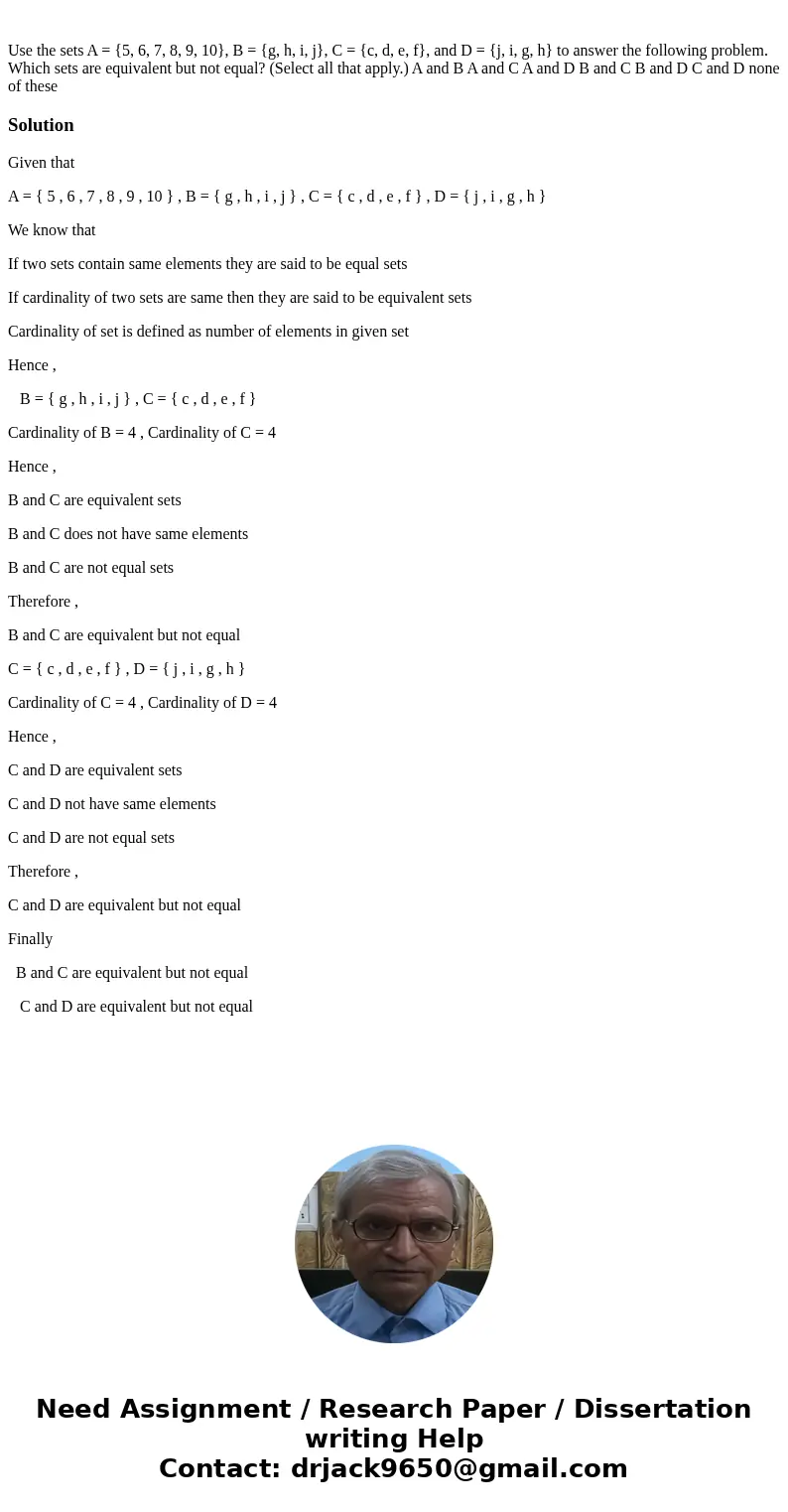Use the sets A 5 6 7 8 9 10 B g h i j C c d e f and D j
Solution
Given that
A = { 5 , 6 , 7 , 8 , 9 , 10 } , B = { g , h , i , j } , C = { c , d , e , f } , D = { j , i , g , h }
We know that
If two sets contain same elements they are said to be equal sets
If cardinality of two sets are same then they are said to be equivalent sets
Cardinality of set is defined as number of elements in given set
Hence ,
B = { g , h , i , j } , C = { c , d , e , f }
Cardinality of B = 4 , Cardinality of C = 4
Hence ,
B and C are equivalent sets
B and C does not have same elements
B and C are not equal sets
Therefore ,
B and C are equivalent but not equal
C = { c , d , e , f } , D = { j , i , g , h }
Cardinality of C = 4 , Cardinality of D = 4
Hence ,
C and D are equivalent sets
C and D not have same elements
C and D are not equal sets
Therefore ,
C and D are equivalent but not equal
Finally
B and C are equivalent but not equal
C and D are equivalent but not equal

 Homework Sourse
Homework Sourse